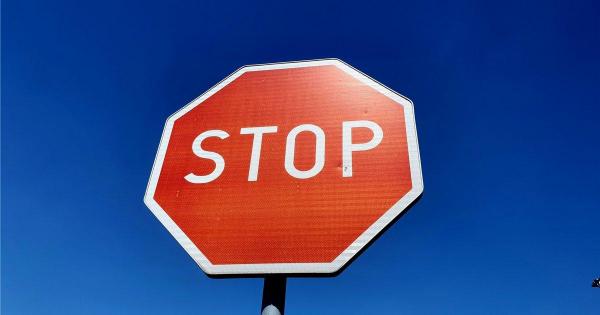
Netherlands: A16 and A12 closures – drivers must expect long detours
When planning trips through the Netherlands in the second half of August and in September, drivers should prepare for major disruptions on two strategic routes – the A16 near Rotterdam and the A12 towards Utrecht.
Works on the A16 – bridge replacement and preparations for the opening of a new section
Rijkswaterstaat is entering the final phase of replacing the viaduct over Hoofdweg on the A16 motorway near Rotterdam. The upgrade is part of preparations for the opening of the new A16 Rotterdam section in October 2025, as well as major maintenance works between the Terbregseplein and Ridderkerk junctions. In August and September, drivers should expect full or partial closures of the route and diversions that may extend travel times by up to 60 minutes.
Dates and scope of closures
A total of five weekends of disruptions are planned:
❌ 22–25 August – complete closure of the carriageway towards A20 (Hoek van Holland/Gouda) between Ridderkerk and Terbregseplein junctions, except for the parallel lane between exits Feijenoord (24) and Centrum (25).
❌ 5–8 September and 12–15 September – closure of the parallel carriageway towards A20 on the same section (main carriageway remains open).
❌ 19–22 September and 26–29 September – complete closure of the carriageway towards Dordrecht between Terbregseplein and Ridderkerk junctions.
Slip roads and access roads may be blocked up to one hour earlier than the main motorway sections.
Detours
Traffic will be diverted via A20, A4 (Benelux Tunnel) and A15, which may add 30–60 minutes to travel time. Rijkswaterstaat urges drivers to plan journeys in advance, consider using public transport, or choose alternative routes.
From 17 August, preparatory works will begin on Hoofdweg, including the closure of exit 27 (Prins Alexander). In September, the City of Rotterdam will replace the traffic control system at Kralingseplein junction and renovate the Cornelis van Beveren cycle bridge over the A16.
Ten-day closure of the A12 – one of the main routes for traffic from Germany
Another major disruption concerns the A12 motorway towards Utrecht, between the Maanderbroek and Lunetten junctions. The road will be completely closed from 22 August to 1 September.
The A12 is one of the most important transport corridors in the Netherlands, especially for trucks coming from Germany towards The Hague and Rotterdam. The designated detour runs via A30, A1 and A27 – it is about 40 kilometers longer and may increase travel times by at least one hour. Authorities warn that during peak hours and summer travel periods, delays may be even greater. In the opposite direction – towards Arnhem – the road will remain open, though roadworks are also scheduled there.
Rijkswaterstaat calls on drivers to plan routes in advance, consider public transport, or use alternative connections to avoid the most severe disruptions.
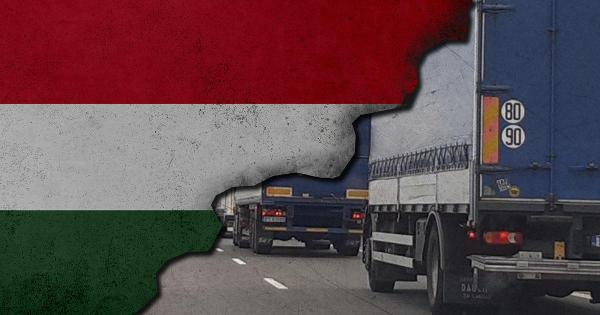
Hungary Eases Truck Driving Ban – Drivers Gain a Nighttime Window
At the request of MKFE, the Ministry of Construction and Transport has introduced a nighttime free passage window as part of the truck driving ban for St. Stephen’s Day. This means that restrictions on heavy goods vehicles will not begin tonight (Tuesday), but only on Wednesday, August 20, 2025, at 06:00 a.m.
The shortened truck ban period in Hungary will be as follows:
✅ August 20, 2025 (Wednesday) from 06:00 a.m. to 10:00 p.m.
(the ban applies to all heavy goods vehicles with a maximum permissible total weight over 7.5 tons).
According to the ministry, this measure is intended to ensure the continuity of supply chains and reduce the risk of spoilage of perishable goods. It also provides hauliers with greater flexibility in transport planning.
MKFE has long been advocating for the introduction of a permanent nighttime passage window every weekend from 10:00 p.m. to 06:00 a.m., which would allow trucks over 7.5 tons GVW to operate during hours of minimal passenger car traffic. Although general regulations have not yet been amended, this year’s St. Stephen’s Day ban will follow this model.
General exemptions from truck bans in Hungary
During truck driving bans (so-called kamionstop), the following vehicles are fully exempt:
▪️ those transporting live animals,
▪️ fresh milk and dairy products,
▪️ fresh or frozen meat and meat products,
▪️ fresh bakery products,
▪️ perishable foodstuffs,
▪️ eggs,
▪️ fresh, unprocessed vegetables and fruit,
▪️ cereals and cereal products,
▪️ as well as empty vehicles traveling to loading points or returning from unloading (if originally designed for transporting such goods).
 In addition, trucks returning from abroad may, in July and August, travel from the state border to the company’s base in Hungary or to the first unloading location, even during the truck driving ban. However, during weekend or holiday restrictions, they are not permitted to use the following 19 road sections:
In addition, trucks returning from abroad may, in July and August, travel from the state border to the company’s base in Hungary or to the first unloading location, even during the truck driving ban. However, during weekend or holiday restrictions, they are not permitted to use the following 19 road sections:
a) M7 motorway – entire length
b) National Road 2 – from Budapest to km 39+150, and Road M2 – from the junction with Roads 2 and 12 to Parassapuszta
c) Expressway 2/A – entire length
d) National Road 6 – between Dunaújváros and Budapest
e) National Road 7
f) National Road 10 – between Dorog and Budapest
g) National Road 11 – between Esztergom and Budapest
h) National Road 12 – entire length
i) Road 1201 – entire length
j) National Road 51 – between the junction with Road 510 and Dömsöd
k) National Road 71 – entire length
l) National Road 76 – between the junctions with Roads 71 and 7, and between Zalaapáti and Road 71
m) National Road 55 – between Alsónyék and Baja
n) National Road 82 – from Road 8 to Veszprémvarsány
o) National Road 84 – from Sümeg to Road 71
p) National Road 33 – from Dormánd to Debrecen
q) National Road 86 – between Jánossomorja and Nemesbőd, and between Körmend and Zalabaksa
r) National Road 37 – between Miskolc and Sátoraljaújhely
s) National Road 38 – between the junction with Road 37 and Rakamaz
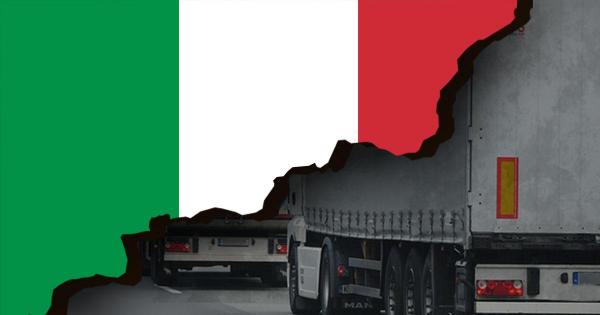
Trucks Diverted in the Ravenna Area – Disruptions to Deliveries to Port Terminals
From August 18 to September 7, significant restrictions on truck traffic are in place on the SS16 Adriatica in the Ravenna area. ANAS has introduced a ban on vehicles over 15 tons on the section between km 147+100 and km 154+500, which in practice severely hinders access to the San Vitale port terminals.
The restrictions are due to extraordinary works being carried out on the movable bridge over the Candiano Canal in Ravenna. At the same time, the closure of this key structure coincides with the prohibition of using the Ravenna bypass (SS16 Circonvallazione), further complicating the situation for carriers.
ANAS Order No. 1038/2025/BO sets a total vehicle weight limit of 15 tons and applies from 7:00 a.m. to 9:00 p.m. The ban does not apply to:
– emergency vehicles,
– passenger buses,
– vehicles heading to ANAS construction sites on the SS16 and SS67,
– specialized vehicles engaged in road interventions.
✅ Mandatory alternative routes:
– For trucks traveling from the south – diversion via SS3bis Tiberina towards Cesena, then northbound on the A14 and A14dir to rejoin the SS16.
– For trucks traveling from the north – diversion via the A14dir northbound, then southbound on the A14 to the Cesena Nord junction, and return via SS3bis Tiberina to the SS16.
These measures are intended to prevent traffic congestion and maintain the continuity of freight transport despite the closure of the bridge and works on the Montone and Ronco viaducts. However, the measure directly impacts both national and local road transport. Extended routes result in delivery delays and higher operating costs for carriers.
For this reason, CUAR – the Ravenna Road Haulage Joint Committee, of which CNA FITA is also a member, has already requested talks with the municipal administration to mitigate the effects of the restrictions and develop compensation measures.
In parallel, the Municipality of Ravenna has introduced local traffic regulations: trucks over 5 tons holding a permit may use designated streets (Viale Europa, via Darsena, via Montecatini, via delle Industrie), while vehicles without a permit are directed exclusively to national roads and motorways.

11 – 14 August: Night-time traffic interruptions in the Fréjus Tunnel
The Fréjus Tunnel operator has announced planned short-term closures of the facility from 11 to 14 August 2025.
Since the opening of the tunnel’s second tube, most maintenance and servicing work has been carried out without the need for alternating traffic. However, due to the installation and removal of signage equipment as part of scheduled works, short traffic interruptions will be necessary.
Closure schedule (each lasting 45 minutes):
⭕ 11 August (Monday): 22:30–23:15
⭕ 12 August (Tuesday): 4:30–5:15 and 22:30–23:15
⭕ 13 August (Wednesday): 4:30–5:15 and 22:30–23:15
⭕ 14 August (Thursday): 4:30–5:15

Hungary lifts night truck traffic ban on August 9–10 due to heatwave
Due to a heatwave, the night truck traffic ban for vehicles over 7.5 tonnes GVW will be temporarily lifted in Hungary from Saturday to Sunday night (9–10 August 2025). The decision was made by the Ministry of Construction and Transport at the request of the Hungarian road transport association MKFE.
The aim is to ensure continuity of deliveries and protect cargo from damage caused by high temperatures. Thanks to the night “free movement window,” transport companies will be able to plan trips more flexibly.
Traffic restriction schedule:
❌ Saturday, 9 August: ban from 15:00 to 22:00
❌ Sunday, 10 August: ban from 06:00 to 22:00
During other hours, trucks may operate on the entire national road network.
In Hungary, permanent exemptions apply to the transport of:
◾ live animals, fresh milk, and dairy products,
◾ fresh and frozen meat, bakery products, eggs, vegetables, fruits, and cereals,
◾ other perishable foodstuffs (with mandatory vehicle marking and transport documents).
Humanitarian transports (minimum Euro 3) are also exempt, and in July and August – provided they avoid certain routes listed in government regulations.
Trucks returning from abroad may, in July and August, travel from the state border to the company’s base in Hungary or to the first unloading point during the truck traffic ban. However, during weekend or holiday restrictions, they may not use the following 19 road sections:
a) M7 motorway – entire length
b) National road no. 2 – from Budapest to km 39+150, and M2 motorway – from the junction with roads no. 2 and 12 to Parassapuszta
c) Expressway 2/A – entire length
d) National road no. 6 – between Dunaújváros and Budapest
e) National road no. 7
f) National road no. 10 – between Dorog and Budapest
g) National road no. 11 – between Esztergom and Budapest
h) National road no. 12 – entire length
i) Road no. 1201 – entire length
j) National road no. 51 – between the junction with road no. 510 and Dömsöd
k) National road no. 71 – entire length
l) National road no. 76 – between junctions with roads no. 71 and 7, and between Zalaapáti and road no. 71
m) National road no. 55 – between Alsónyék and Baja
n) National road no. 82 – from road no. 8 to Veszprémvarsány
o) National road no. 84 – from Sümeg to road no. 71
p) National road no. 33 – from Dormánd to Debrecen
q) National road no. 86 – between Jánossomorja and Nemesbőd, and between Körmend and Zalabaksa
r) National road no. 37 – between Miskolc and Sátoraljaújhely
s) National road no. 38 – between the junction with road no. 37 and Rakamaz

Hungary: Truck traffic ban suspended overnight from July 26 to 27 due to heatwave
The Hungarian Ministry of Construction and Transport, at the request of the national hauliers’ association MKFE, has temporarily relaxed the weekend truck traffic ban for July 26–27 due to the ongoing heatwave. This means that heavy goods vehicles will be allowed to travel freely across Hungary during the night from Saturday to Sunday, between 10:00 p.m. and 6:00 a.m..
The decision, initiated by industry associations, aims to mitigate the impact of high temperatures on the transport sector and to maintain the continuity of supply chains.
In practice, this means that the weekend driving ban for vehicles with a gross vehicle weight over 7.5 tonnes will apply in a shortened time frame:
❌ Saturday, July 26 – from 3:00 p.m. to 10:00 p.m.
❌ Sunday, July 27 – from 6:00 a.m. to 10:00 p.m.
General exemptions from Hungary’s truck traffic restrictions:
During the enforcement of the “kamionstop” (truck ban), the following vehicles are completely exempt:
Vehicles transporting:
▪️ live animals
▪️ fresh milk and dairy products
▪️ fresh or frozen meat and meat products
▪️ fresh bread
▪️ perishable foodstuffs
▪️ eggs
▪️ fresh (unprocessed) vegetables and fruits
▪️ grains and grain products
▪️ Empty vehicles: en route to pick up the above cargo or returning from delivery (provided the vehicle is purpose-built for transporting such goods)
❗IMPORTANT: Additional summer exemption for returning trucks
Throughout July and August, trucks returning from abroad are allowed to travel from the national border to their company base in Hungary or to their first unloading point, even during the general truck ban.
However, this exemption does not apply on the following 19 specific road sections during weekends and public holidays:
a) M7 motorway – along its entire length
b) Main Road 2 – from Budapest to 39+150 km, and M2 – from the junction with Roads 2 and 12 to Parassapuszta
c) Expressway 2/A – entire section
d) Main Road 6 – between Dunaújváros and Budapest
e) Main Road 7
f) Main Road 10 – between Dorog and Budapest
g) Main Road 11 – between Esztergom and Budapest
h) Main Road 12 – entire section
i) Road 1201 – entire section
j) Main Road 51 – between the junction with Road 510 and Dömsöd
k) Main Road 71 – entire section
l) Main Road 76 – between junctions with Roads 71 and 7, and between Zalaapáti and Road 71
m) Main Road 55 – between Alsónyék and Baja
n) Main Road 82 – from Road 8 to Veszprémvarsány
o) Main Road 84 – from Sümeg to Road 71
p) Main Road 33 – from Dormánd to Debrecen
q) Main Road 86 – between Jánossomorja and Nemesbőd, and between Körmend and Zalabaksa
r) Main Road 37 – between Miskolc and Sátoraljaújhely
s) Main Road 38 – between the junction with Road 37 and Rakamaz

Notice: Weekend Closure of the Považský Chlmec Tunnel on the D3 in Slovakia
Drivers traveling through northern Slovakia this coming weekend should prepare for disruptions. From Friday, July 18 at 8:00 p.m. until the evening of Sunday, July 20, the Považský Chlmec tunnel on the D3 motorway near Žilina will be completely closed.
The closure affects the section between the Žilina Strážov and Žilina Brodno interchanges. The reason is a scheduled technical inspection and maintenance of the tunnel infrastructure – including ventilation, control, and monitoring systems. These works are necessary to ensure traffic safety on this strategic stretch.
During the closure, traffic will be rerouted as follows:
➡️ From the Strážov direction – via national road no. 61 through the center of Žilina,
➡️ From the Brodno direction – via national road no. 11, also through the city.
Traffic jams are expected, especially during peak hours. The disruption will particularly affect transport on the north–south axis, including international freight traffic from Poland heading toward the Czech Republic, Austria, and Hungary.
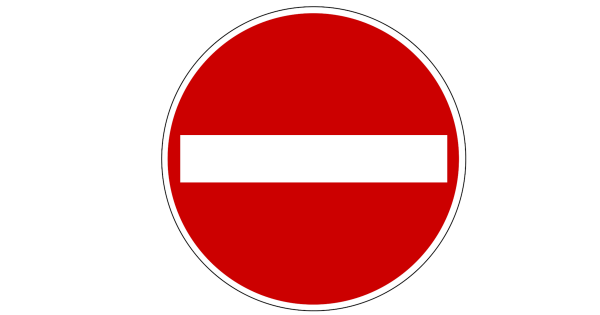
Traffic Disruptions on the S1 Route – Laliki Tunnel Temporarily Closed
Drivers traveling on the S1 expressway toward the Zwardoń border crossing should prepare for significant traffic disruptions. The road tunnel in Laliki will be temporarily closed to traffic, and detours will be in place for both passenger cars and heavy goods vehicles.
The disruptions will begin on July 21, 2025, at 06:00 and will continue until August 18, 2025, at 06:00. During the closure period, traffic will be redirected to designated detour routes. Drivers are advised to exercise particular caution and follow temporary road signage.
➡️ Heavy goods vehicles will be redirected to other border crossings. The recommended detour route for freight traffic is via Cieszyn.
➡️ Passenger vehicles will be diverted along a local road through the center of Laliki, using the former DK69 route (now a municipal road) between the Rajcza and Laliki interchanges.

E17 in Belgium closed overnight from July 22 to 23 ➡ Detour routes
During the night from Tuesday, July 22 to Wednesday, July 23, the E17 motorway in Belgium will be completely closed in both directions between the Sint-Niklaas interchange (exit 15) and Kruibeke (exit 16). The closure will be in effect from 10:30 p.m. to 4:00 a.m. due to roadworks.
Detour routes will be in place during the closure:
➡️ Direction Antwerp: Traffic will be diverted at exit 15 onto the N16, then via the N70 towards Beveren and Melsele, and further along the N419 back to the E17 at the Kruibeke interchange.
➡️ Direction Ghent (Gent): Drivers will be redirected at exit 16 onto the N419 and then via regional roads in the Temse area, returning to the E17 at Sint-Niklaas.
➡️ The Haasdonk exit and entry (15a) will be unavailable during this time.
The Flemish Traffic Centre recommends planning your route in advance. Information signs on the E40 and E19 motorways will advise avoiding the affected stretch of the E17 and using alternative routes.
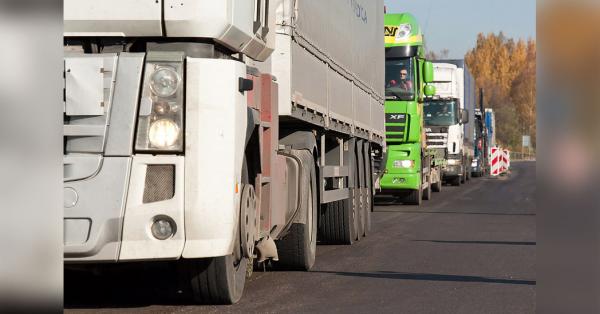
A46 in Germany closed in both directions ➡ detours in place
Drivers traveling through North Rhine-Westphalia this coming weekend should prepare for major disruptions. Due to construction work in the Wuppertal-Cronenberg area, the A46 motorway will be completely closed in both directions between the Sonnborner Kreuz interchange and the Wuppertal-Cronenberg exit.
The closure will be in effect from Friday, 25 July 2025 at 9:00 p.m. until Monday, 28 July 2025 at 5:00 a.m.
Alternative detour routes will be in place during the closure:
❌ so-called red dot routes (signposted detours via lower-category roads),
❌ broader detours using the surrounding motorway network.
The works are part of an infrastructure modernization and the expansion of the traffic junction in Wuppertal. The closure affects one of the key sections of the A46, a major east–west connection in the region, so increased traffic volumes are expected on the detour routes.